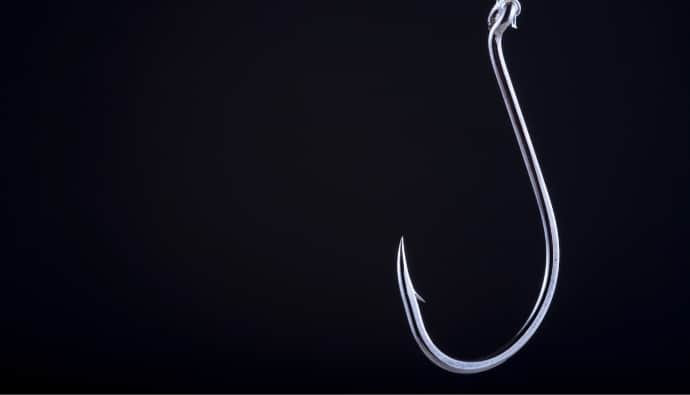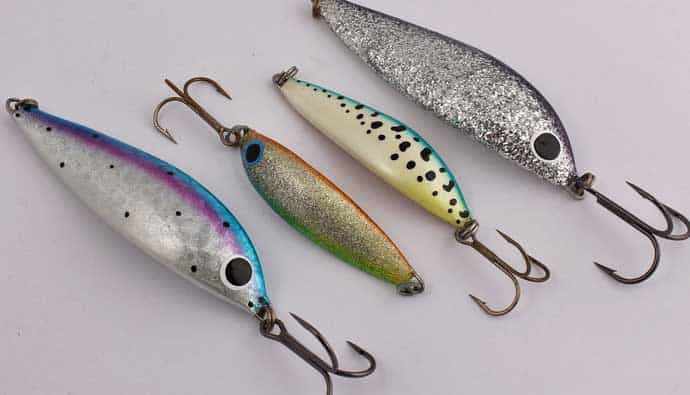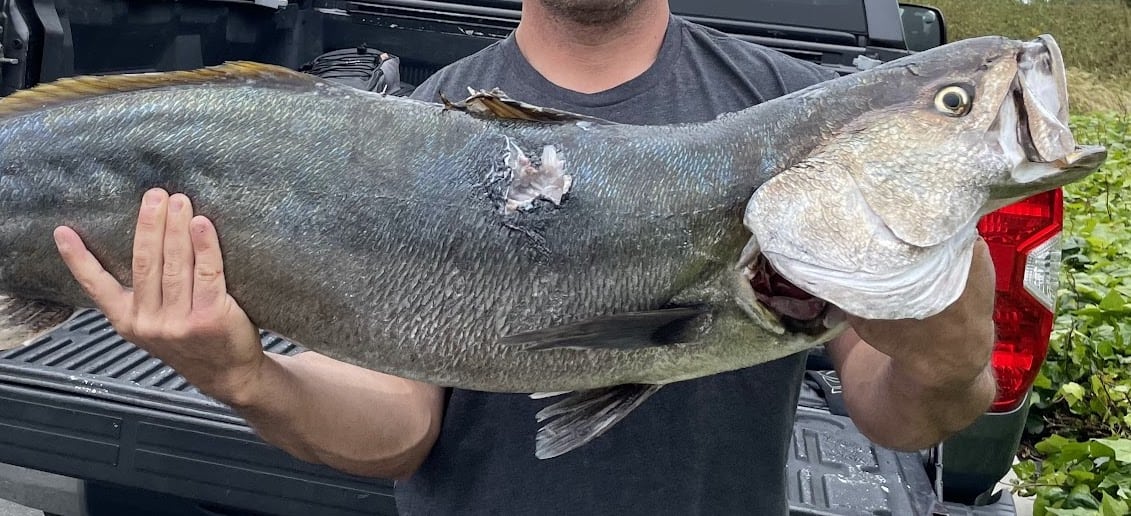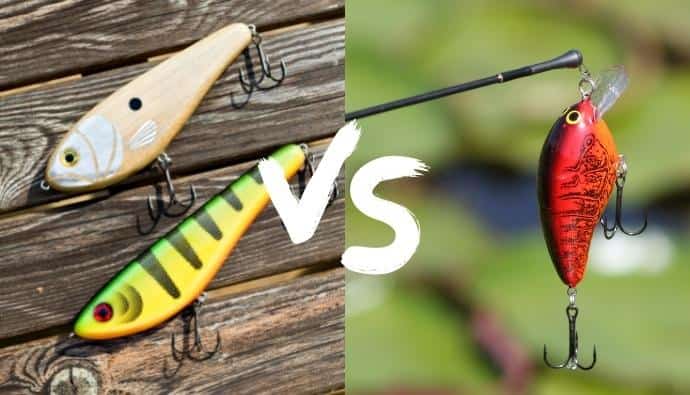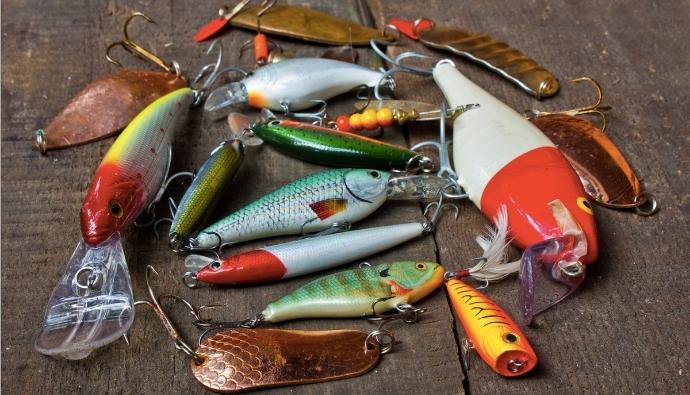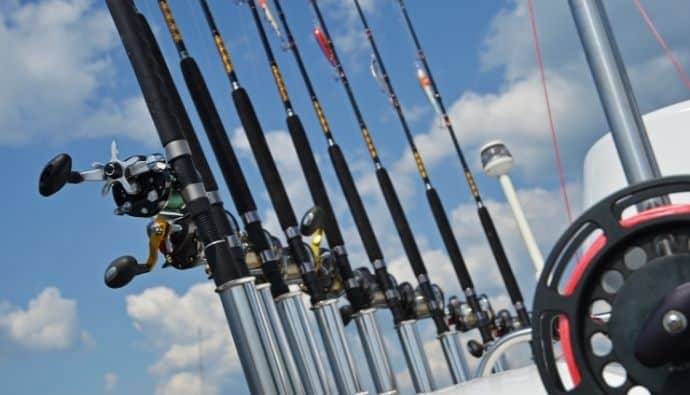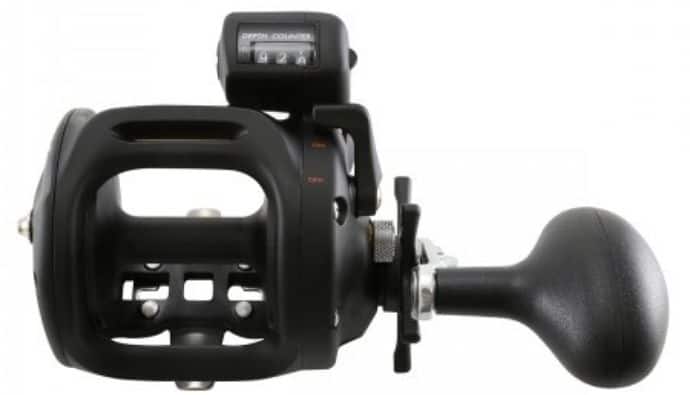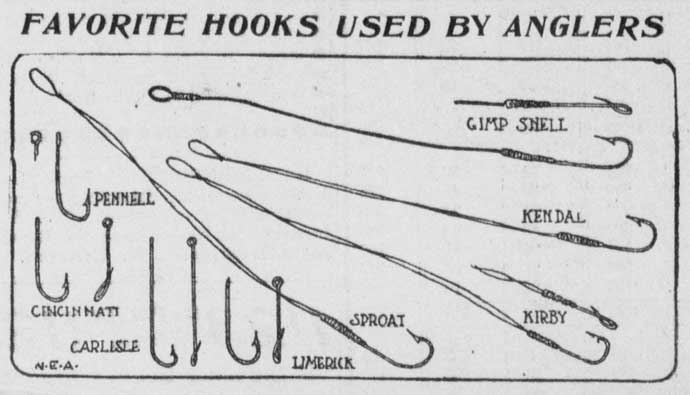Looking to catch a tuna but aren’t sure which lure to use? Tuna can be finicky, and what might work in one part of the world might not work in another. In this review, we present our favorite brands and models that are worth adding to your tackle box.
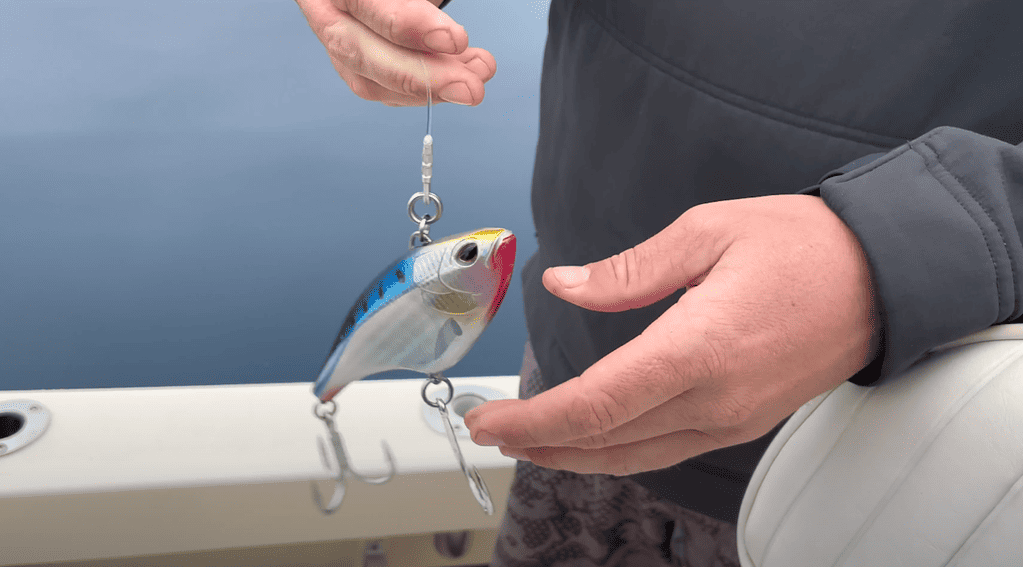
The Short Answer:
The best tuna fishing lures include Madmacs, butterfly jigs, knife jigs, cedar plugs, poppers, and spreader bars. The Shimano Butterfly Jig and Colt Sniper, Mustad Rip Roller, and Madmacs are popular on the West Coast. When rigging your lure, usually it’s best to ditch the stock hooks and re-rig it. You never know when a monster cow will hit, leaving your split ring ravaged and hook bent.
At A Glance: Top Tuna Lures
- Nomad MadMacs
- Shimano Butterfly Jigs
- Mustad Rip Roller
- Tuna Spreader Bar
- California Flyer
- Ahi Snack Lure
- Cedar Plugs
Note: Clicking the above links will take you to Amazon.com or TackleDirect.com where we have an affiliate relationship. Once there, you’ll get additional product information and customer reviews. If you make a purchase, we may earn a commission at no additional cost to you.
Buyer’s Guide
It’d be easy for me to make a few popular recommendations and send you on your way. However, to make an informed decision, it’s important to clarify why certain lures are used and when. Let’s briefly cover the different tuna species, choosing the right lure, lure types, when to use them, and understanding tuna behavior.
Understanding the Different Tuna Species
Tuna are warm-blooded fish torpedos eagerly looking for calories. Bluefin (our local species), Yellowfin, Albacore, and Bigeye are the most common types. Each of these species has unique characteristics and habitats. For example, you can find large bluefin tuna on both sides of the USA. Yellowfin tends to be found in warmer waters, like Hawaii and the Indian Ocean.
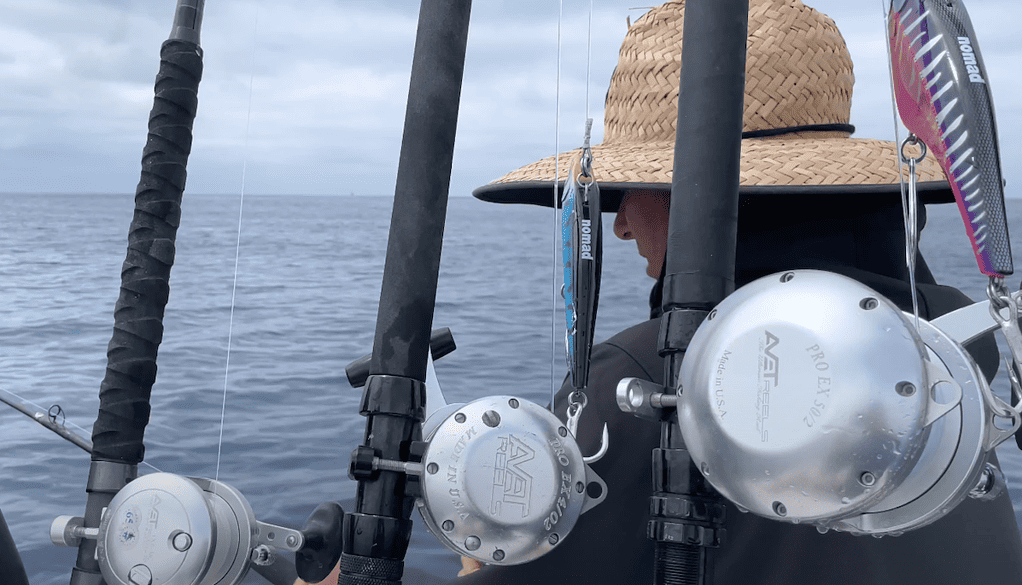
Choosing the Right Lure for the Tuna Species
Tuna are warm-blooded fish torpedos eagerly looking for calories. Bluefin (our local species), Yellowfin, Albacore, and Bigeye are the most common types. Each of these species has unique characteristics and habitats. For example, you can find large bluefin tuna on both sides of the USA. Yellowfin tends to be found in warmer waters, like Hawaii and the Indian Ocean.
Lure Types and When to Use Them
It’s best to ask for what’s been working in your area. For example, the Shimano butterfly jigs have worked well for a long time. Then after a few years, you heard guys catching monster bluefin on knife jigs. Right now, Nomad Madmacs are working. Things change, so ask around. Or have various lures at your disposal to try things out.
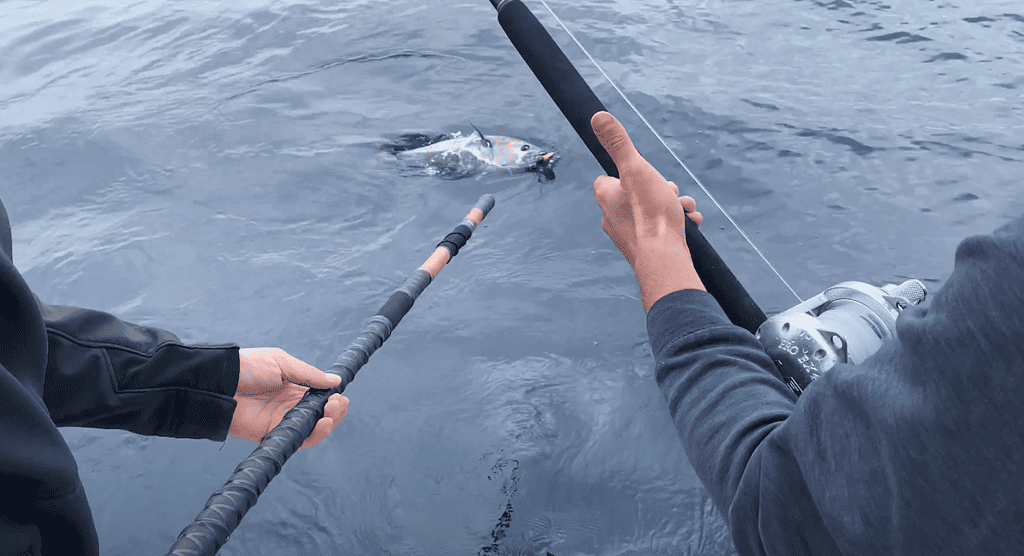
Understanding Tuna Behavior and How It Influences Lure Choice
Tuna fishing offers multiple options. You can troll plugs, Madmacs, and even spreader bars to cover large tuna grounds. If you’re marking deep fish you can drop jigs. This is also popular when night fishing on party boats. If you see a foamer of tuna attacking bait fish, then it’s not uncommon to throw a popper to try and get a feeding frenzy topwater bite.
The Role of Color in Tuna Lures
There are countless colors to choose from. Sometimes it feels like the options are more for catching fishermen than tuna. That being said, color can play a significant role in attracting tuna. Bright colors like red, orange, white, blue, and pink are effective in clear water. Darker colors like navy blue and black work better in cloudy and murky water.

Size and Weight Considerations
The size of the lure and weight depends on a few variables. If you’re fishing in light current, you can get away with a lighter lure. If the current is ripping, switch to sometimes heavier to get the lure down and in the zone without drifting horizontally.
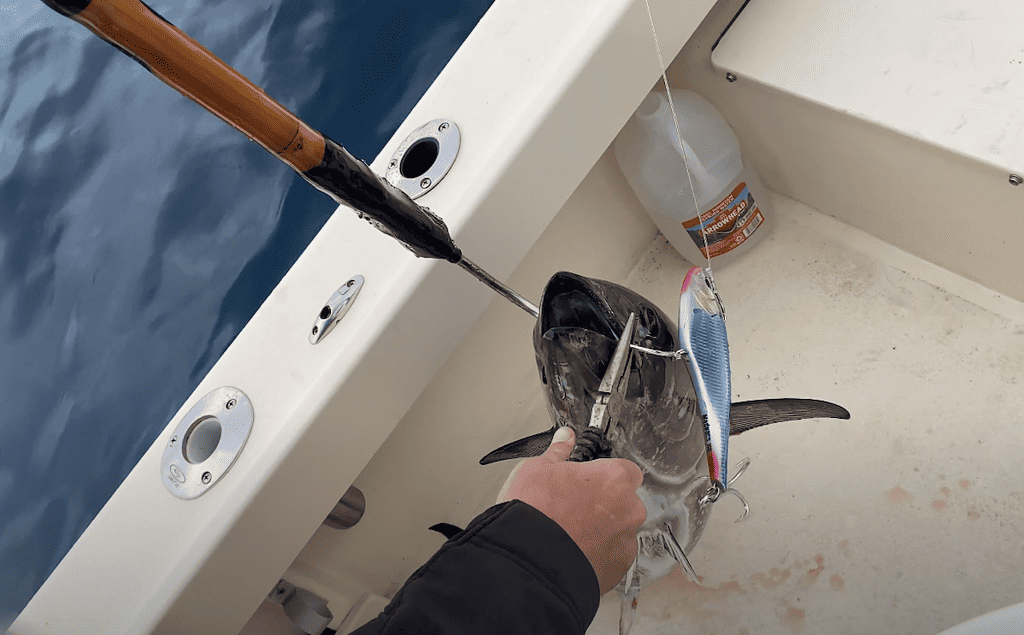
The Importance of Quality Hooks
I wouldn’t recommend trusting stock hooks. Tuna isn’t going to be line shy when eating a big lure. Therefore, beef up your hooks to a brand you trust and go with their strongest option. The last thing you want is a hook to bend out on a super cow. For example, my buddy always swaps out his back hook on the Madmacs with a heavy-duty owner treble. He pays $70 for a pack of 5. Now that’s dedication.
How To Rig Your Tuna Jigs
This is one of my favorite guides for how to rig your deep drop rigs. I like how simple he makes the switching process using split rings. I’ve since changed out all of my deep drops to follow this protocol.
Top Tuna Lures
Now that you have a base for what to look for in a tuna lure, we’ll share our choice lures with you. Fishermen around the globe have vetted each of these lures. You don’t have to take our word for it, and we’ll share quotes from real-world anglers who have something to say about each.
1. Nomad Madmacs
The Nomad Madmacs is a high-speed trolling lure originally designed for catching fast fish like wahoo. Fortunately, the guys started catching tuna with them. Now they’ve changed the game here in Southern California, allowing us to troll at higher speeds and cover more ground.
“The MadMacs is my go-to lure for high-speed trolling. It’s caught me more tuna than any other lure in my tacklebox.”
2. Shimano Butterfly Jigs
Shimano Butterly Flat-Fall Jigs are effective when fishing deep water. Their unique design allows the lure to flutter down the water column giving an attractive presentation to the tuna. When fishing at night, try the white or glow-in-the-dark colors. The pink and blue seems to be a favorite for the daytime bite.
“It’s a game changer. It’s helped me land some of the biggest tuna I’ve ever caught.”
3. Mustad Rip Roller
Mustad Rip Rollers are another good deep-drop jig. The narrow profile allows for it to zip straight into the strike zone. You can rig it with an assist hook on the bottom and one at the top. Refer to the video above on how to rig the deep drop rigs correctly.
4. Tuna Spreader Bar
Spreader bars are meant to mimic a school of baitfish. This makes them attractive to tuna since there’s a lot of action, and it looks like a good meal. They are popular when the fish are deep because it seems to bring the school higher. Unfortunately, it also means you must slowly troll, limiting how much ground you can cover.
5. California Flyers
The California Flyer is a trolling lure usually attached to a kite or helium balloon. It’s designed to mimic the swimming and flying pattern of the flying fish, a favorite tuna food. They aren’t cheap. However, it is nice to reuse them, unlike the frozen ones you buy from the tackle shop.
6. Rigged Bost #27 Ahi Snack Lure
What distinguishes this lure is its capacity to produce a distinct sound that attracts pelagic fish as they swim in the water. They’re particularly effective when used as a shotgun lure or in the prop wash. These tuna lures have an aerospace resin finish, making them durable enough not to discolor, break, or crack easily over time.
7. Cedar Plugs
We can’t leave out a traditional lure like cedar plugs. Even though they look like they shouldn’t catch tuna, they still do. They’re designed to mimic a wounded baitfish. Traditionally they are just unfinished wood with a lead head and hook. But now they are getting new paint jobs and looking more modern. Troll these behind your boat and see what you catch.
Frequently Asked Questions
What type of line is best for my lure?
Tuna fight hard. We use braided line above 80 pounds. For example, when trolling Madmacs for bluefin tuna, we had the chance to hook up on a small 35-pound fish up to 250 pounds. Therefore, my buddy ran a 150-pound braid on his large 5/0 reels. He then had a top shot of wind-on leader of 300-pound fluorocarbon.
Why is my lure not attracting any tuna?
It’s important to make sure tuna are in the area first. It might be a depth issue if they are but aren’t biting. Ensure you’re using the right lure and getting it in the zone. If it’s still not working, check the color and use the correct technique to have the lure act as designed. Sometimes, you can do everything by the book, and the fish don’t want to eat.
What are some common mistakes to avoid when fishing for tuna?
The biggest mistake is not venturing out a few times with folks who know how to catch tuna. You can read many things online, but nothing beats learning in real time and asking questions. Another thing, make sure you’re in shape. Tuna fishing is boring until it’s insane. You’ll be waiting for hours looking off into the distance for action or waiting to mark on the fish finder. Then once you get a hook-up, bringing the fish in could take 20 minutes to over an hour. Make sure you’re up for the task!
Final Thoughts
Whether you’re trolling, deep dropping, or throwing your surface lure into a boil of hungry tuna, we hope our selection has helped you add a few more options to your tackle box.
The right lure depends on which species you’re targeting, what scenario you find yourself in, the conditions, and whether the fish cooperate that day.
One thing is for sure, keep testing to see what works. Don’t be afraid to switch things up!






 Facebook
Facebook YouTube
YouTube